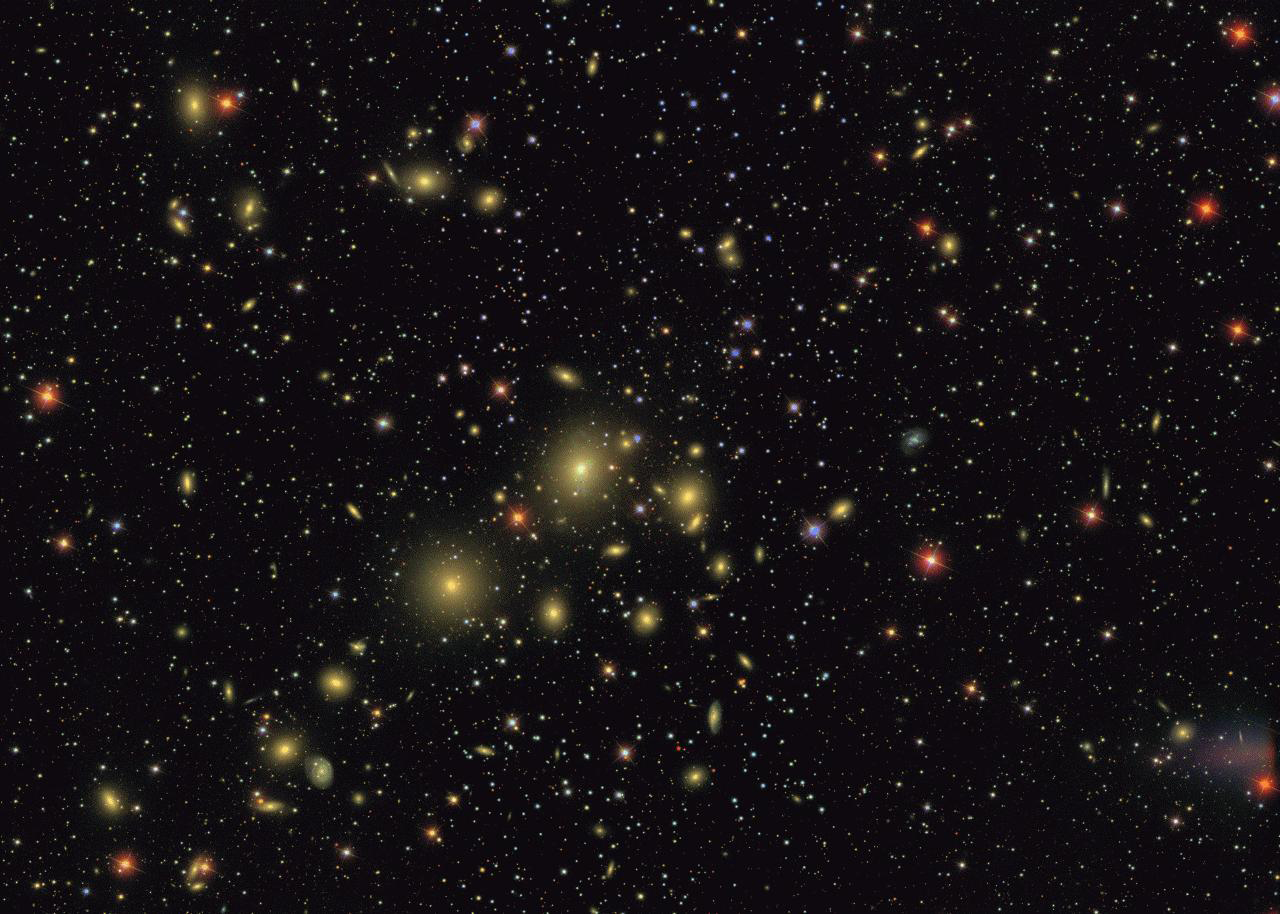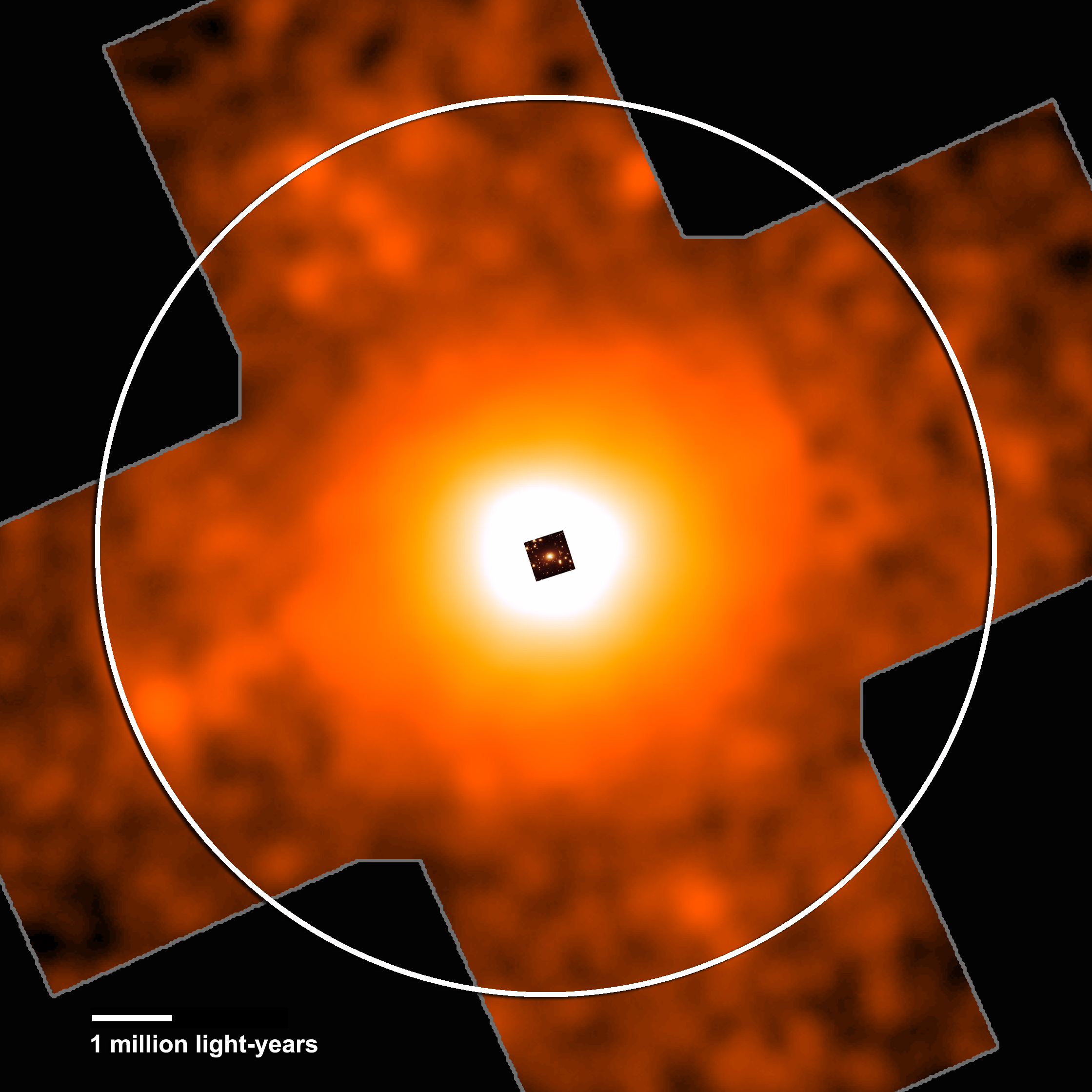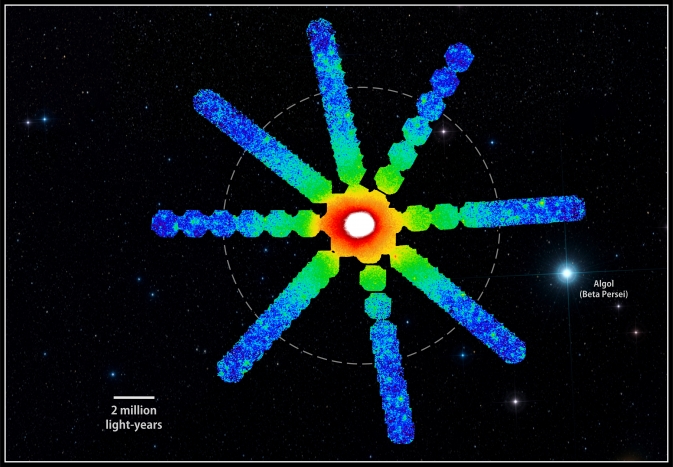Celebrating 10 Years of Suzaku
Outskirts of Clusters of Galaxies
Long before Suzaku launched in 2005, scientists knew that clusters of galaxies were filled with hot, X-ray emitting gas. The combined gravity of the cluster keeps the hot gas from escaping, and we can estimate how much mass is needed to keep the gas within the cluster. It turns out that the stars that make up the member galaxies add up to just a small fraction of the total mass. The X-ray emitting gas itself is a more significant part of the story. But the main source of the gravity is dark matter.

The Perseus galaxy cluster contains 190 galaxies and lies about 225 million light-years away. (Credit: Robert Lupton and the Sloan Digital Sky Survey Consortium)
In fact, galaxies and clusters of galaxies are believed to form from normal matter attracted by clumps of dark matter, which in turn grew out of small fluctuations in density in the early universe. Clusters of galaxies can grow by merging with each other or by accreting smaller clumps. Studies of the formation and growth of large scale structures such as clusters are an active area of research today. In theoretical studies, dark matter, mysterious it is, is easier to deal with: you only have to consider its gravitational effects, by definition. The behavior of normal matter is far more complex. They form stars, which creates heavier elements from hydrogen and helium. Some stars explode as supernovae, dispersing newly created elements which are heated by collisions with nearby interstellar matter. Stars, supernovae, and supermassive black holes at the centers of galaxies produce a lot of electromagnetic radiation, which can push around normal matter.
You can learn a lot about this process by observing clusters of galaxies in the X-rays. Such studies naturally started with places where the X-ray glow is the most intense. That's the central region of clusters, since X-ray emission is proportional to the square of the density, and the densest part of clusters is the central region. If that's all you can do, you have to worry if you might be missing something important. Before Suzaku entered the picture, that was the case, with typical Chandra and XMM-Newton observations of clusters being able to study only about 30% of the volume of clusters of galaxies. It turns out that, while these flagship missions have exquisite sensitivities for point-like sources of X-rays, Suzaku is better suited to studies of the diffuse, faint glow of X-rays from the outskirts of clusters. Both in-depth studies of individual clusters and comparisons of clusters with different physical properties have been performed using Suzaku data and produced new insights. One cluster in particular, Perseus, has been observed at many locations because this is the nearest brightest cluster.
Here are three noteworthy discoveries by Suzaku featuring galaxy clusters.

This Suzaku image shows X-ray emission from hot gas throughout the galaxy cluster PKS 0745-191. (Credit: NASA/ISAS/Suzaku/M. George, et al.)

Suzaku's observations across two swaths of the Perseus Galaxy Cluster. (Credits: NASA/ISAS/DSS/A. Simionescu et al.; inset: NASA/CXC/A. Fabian et al.)

Suzaku explored faint X-ray emission along eight different directions in the Perseus Galaxy Cluster. (Credit: NASA/ISAS/DSS/O. Urban et al., MNRAS)
Publication Date: July 2015


